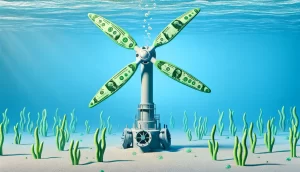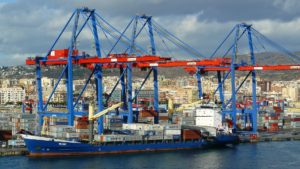Most will agree that renewables are a necessary part of our energy future, but solar and wind alone are not enough. In this post we discuss the advantages of marine renewables and why they should be part of the future energy mix.
If you haven’t read the first post in this series “Why Do We Need Renewables” then you might want to start there, otherwise read on!
Power Density
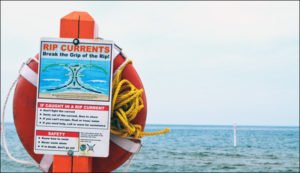
Imagine you are standing on a beach. A gentle 5-knot breeze begins to blow. You know how this feels, it’s a light breeze and it certainly is not enough to knock you over. Now imagine you walk down into the ocean up to your chest, only to realize that that there is a 5-knot rip current. After you’re swept helplessly out to sea you’d be right to realize that you feel significantly more force from the liquid current than the air current. This is due to the difference in density between the two fluids.
It is this density difference that makes wave energy and tidal energy particularly sexy. Let’s compare air and seawater. The density of air is of 1.225 kg per cubic meter and seawater is 1,025 kg per cubic meter. They differ by a factor of 830! This means that to achieve a given amount of power, water speed can be significantly less than wind speed, all else being equal.
We can rate a generation source by the energy density of its fuel source, or the power density of the device itself. Energy density is the amount of energy stored in a given system per unit volume or mass. Uranium, Plutonium, Methane, and Hydrogen are all energy dense and not coincidentally these are all great fuel sources.
Power density is the amount of power (rate of energy transfer) per unit of volume, mass, or area. When analyzing renewables, watts per square meter has become the unofficial metric. Power density is not a straightforward calculation; it is often unclear what parts of a generation system to include. Should you include the area of the coal mine and storage yard for a coal fired power plant? The jury is still out. A lower power density would mean that more surface area is required to generate a given amount of power.
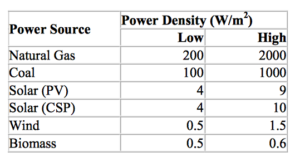
It is not exactly an apples-to-apples comparison, but let’s review the power densities of some different generating sources. As shown in the table to the right wind and solar are pretty low when compared to fossil fuels. Now let’s look at some marine renewables:
Tidal Power Density: 2 – 50 Watts/m²
Wave Power Density*: 2 – 100 Watts/m² (est.)
* Wave power density is typically measured in watts per meter of wave crest and it represents the average energy per second that is passing underneath one meter of wave from the wave crest to the sea floor. Typical wave power densities can be on the order of 50,000 W/m. As an example suppose a wave energy converter on shore parallel to wave travel was 100 meters long, this would mean a potential power density of 500 W/m². Assume losses of 80%, and we arrive at 500 W/m².
In both cases we see that the respective power densities of marine renewables are an order of magnitude greater than solar or wind.
Diversification
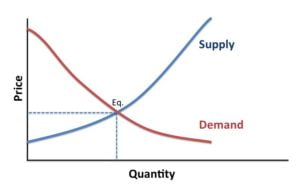 The grid operator is primarily concerned with balancing power generation with consumption. It’s the classic example of matching supply with demand, except in this case supply must always meet demand. If not, well, bad things happen. Grid operators love stability in generation because it makes their lives that much easier. Fossil fuel and nuke power plants provide this stability quite well, at least when Enron (R.I.P) isn’t running things.
The grid operator is primarily concerned with balancing power generation with consumption. It’s the classic example of matching supply with demand, except in this case supply must always meet demand. If not, well, bad things happen. Grid operators love stability in generation because it makes their lives that much easier. Fossil fuel and nuke power plants provide this stability quite well, at least when Enron (R.I.P) isn’t running things.
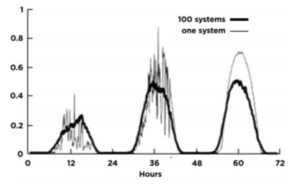
Renewables make this balancing act a little more difficult because most don’t have a constant output and are hard to forecast accurately. Marine renewables may prove to be the exception. Just like having a diversified financial portfolio hedges your risk to different asset classes, the same can be said for energy generation; why not spread it out many different sources? Marine renewables can provide an additional level of risk hedging.
Refineries catch fire, pipelines can be damaged, the sun doesn’t always shine, and wars can disrupt entire energy supply chains, but the ocean, she keeps a’flowing. By producing from multiple generation sources that don’t depend on ships, pipelines, and refineries we are decreasing our exposure to risk. Over a large area with many more renewable energy generation sources connected to the same grid, the risk of not meeting demand is decreased further.
Geography
You’ve heard it before: “Location, location, location.” Same holds true for siting renewable energy systems. Marine renewable devices are intrinsically limited to geographic areas that are near bodies of water, but that may actually work to their benefit. From the NOAA website:
In the United States, counties directly on the shoreline constitute less than 10 percent of the total land area (not including Alaska), but account for 39 percent of the total population. From 1970 to 2010, the population of these counties increased by almost 40% and are projected to increase by an additional 10 million people or 8% by 2020. Coastal areas are substantially more crowded than the U.S. as a whole, and population density in coastal areas will continue to increase in the future. In fact, the population density of coastal shoreline counties is over six times greater than the corresponding inland counties.
Given that so many people live on or near the coast, this puts the end user closer to the generation source, potentially cutting down on transmission costs and losses. I say potentially here because there is not a wealth of data on this at the moment.
Reliability
To combat intermittency we need energy sources that are reliable and predictable (or cheap energy storage but I’ll open that can of worms later). Few things are more regular than the sun rising each day, but clouds do a number on the power output of a photovoltaic (PV) system. Is there something more reliable than the sun? DC Traffic during rush hour you say? Yes, but not the answer we are looking for.
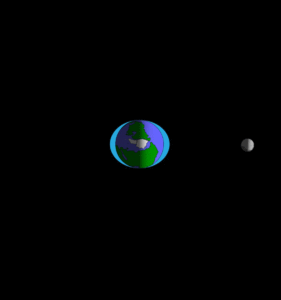
What about the moon? Lunar gravity causes our planet’s oceans to bulge in the direction of the moon (meanwhile on the opposite side of the planet inertia causes a similar bulge). Since our planet spins and the moon rotates around us, the ocean rises and falls daily. Tides happen like clockwork; most coastlines on earth experience two high and two low levels each day. Ever shown up at the beach with all your stuff only to realize the water is 500 yards away because of low tide? Blame the moon.
Of course this large movement of water means that that there is a flow. It is from this flow that we can extract energy. The best part though is that tides are extremely reliable and easy to predict. Tidal energy is still intermittent since the strength of the tidal current varies causing irregular output, but the key here is that it happens everyday.
There are two other forms of marine renewable energy worth mentioning here: wave energy conversion (WEC) and ocean thermal energy conversion (OTEC).
A WEC extracts kinetic and potential energy from ocean waves to run a power system. Although it is an intermittent power source, many believe that wave energy is much more reliable and predictable than solar or wind, especially offshore.
OTEC exploits the temperature difference between relatively warm surface waters and cold deep-ocean water. It is analogous to a geothermal plant on shore. Since these temperature differences are near constant in some areas, this form of renewable energy generation could potentially serve as a base load.
So there you have it, four extremely compelling reasons to adopt more marine renewables onto the grid. Of course these devices have challenges, but we’ll discuss those in other posts. What’s important to remember here is that marine renewables are energy dense, geographically advantageous, provide reliable power, and add more diversification to the grid. What’s not to like?
References: MasterResource; Iowa Energy Center, ASME, Waters, R 2008, “Sustainable Energy – Without the Hot Air” McKay, D 2008

